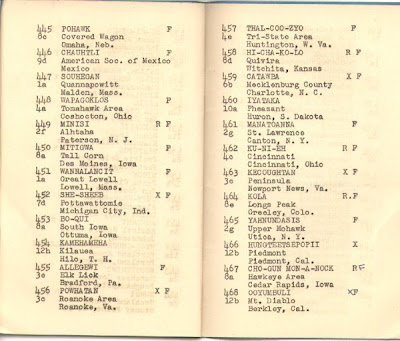
While researching the history of Camp Okee in Gloucester County google presented me with a link to a story on Southern Scribe by Bob Faw about his experiences in 1964 at "the camp called Okie on the river named James."
Bob's story includes details about 1964 being the camp's last year after serving three decades of campers, so I sent him an email to see if his "Camp Okie" is in fact "Camp Okee" that previously served Peninsula Council. I also sought permission to link to his essay. Bob's reply confirmed that the camp from his memory was indeed Camp Okee, granted permission for me to link to his story, and promised to share additional memories about his experiences there:
Yes, I can add to your anecdotal archives about Okee--and the closing--as I was among the wrecking crew that laid her to rest. I have stories to tell about that summer: our mile swim and three-mile swamp wade; the open-sided Adirondacks we lived in and the tricks we played on each other and the "grubs"; the arrival of new campers and the tearful goodbyes from their sisters at the final campfires; skunk hunting--and catching; catching and cooking blue crabs on the shores of the James River; sneaking a canoe into Yorktown one night to play bingo and the phosphorescent micro-jellyfish that turned the bow wake into glowing green glass; the larger jellyfish that could get a camper to walk on water; campfire skits, nonsense songs, and comraderie ...With thanks to Joyce Dixon, the owner of Southern Scribe, which hosts Bob's Story, I heartily recommend that you read Bob Faw's A Change of Life and join me in waiting eagerly for more stories of his Camp Okee days.
I'll try and remember to write down the best of the stories--especially the canoe trip, infecting the camp with "Frog Pox," and the skunk hunts (especially where the skunks ended up).


















